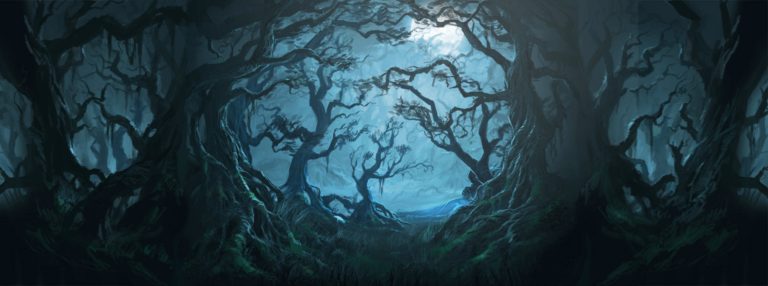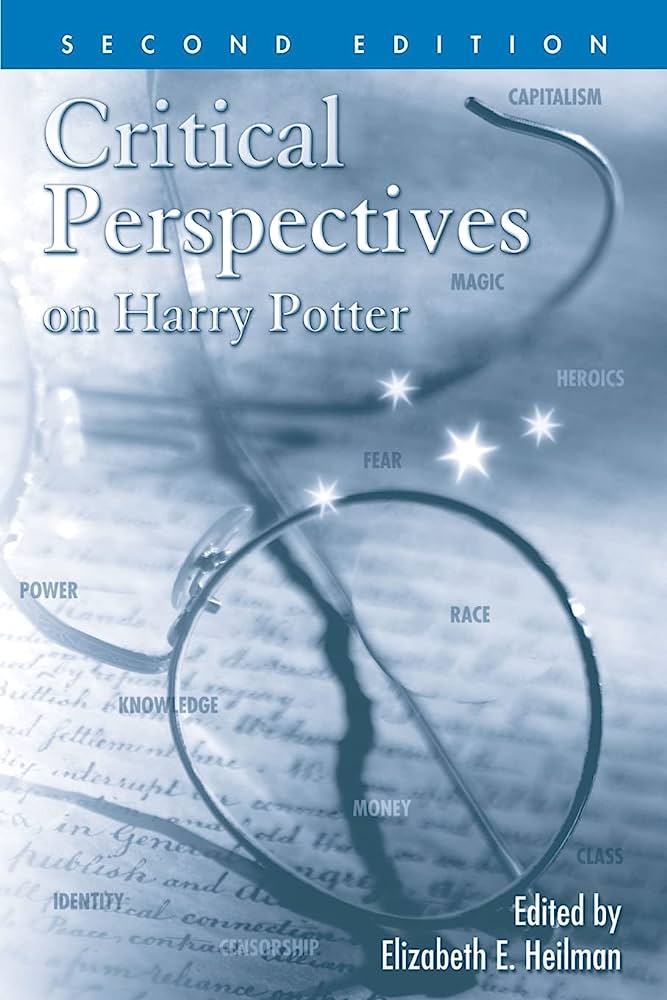The Evolution Of Harry Potter Books: From Sorcerer’s Stone To Deathly Hallows
Once upon a time, in the magical world of literature, there was a young boy named Harry Potter who captured the hearts of readers around the globe. From the moment J.K. Rowling introduced us to the enchanting world of Hogwarts in “Harry Potter and the Sorcerer’s Stone,” we were spellbound. But little did we know that this humble beginning would mark the start of an epic journey that would span seven books and captivate millions of fans. Join me as we delve into the evolution of the Harry Potter books, from the humble origins of the Sorcerer’s Stone to the breathtaking conclusion of the Deathly Hallows.
The story of Harry Potter is a testament to the power of imagination and the enduring magic of storytelling. With each new installment, J.K. Rowling transported us deeper into the wizarding world, weaving a complex tapestry of adventure, friendship, and triumph over darkness. From the moment we first met Harry, Hermione, and Ron, we were instantly drawn into their world of spells, potions, and mythical creatures. With every turn of the page, we eagerly followed their journey through Hogwarts School of Witchcraft and Wizardry, as they faced challenges, discovered hidden truths, and ultimately fought against the forces of evil. It is a tale that has captured the hearts of millions, and continues to inspire readers of all ages to this day. So, grab your wand and prepare to embark on a magical journey through the evolution of the Harry Potter books, where the ordinary becomes extraordinary, and the impossible becomes possible.

The Evolution of Harry Potter Books: From Sorcerer’s Stone to Deathly Hallows
The Harry Potter book series, written by J.K. Rowling, has captivated readers of all ages since the release of the first book, “Harry Potter and the Philosopher’s Stone” (known as “Harry Potter and the Sorcerer’s Stone” in the United States), in 1997. The series follows the journey of a young wizard named Harry Potter and his friends as they navigate the magical world of Hogwarts School of Witchcraft and Wizardry.
Over the course of seven books, the Harry Potter series has evolved and grown in complexity, captivating readers with its rich characters, intricate plotlines, and exploration of themes such as friendship, love, and the battle between good and evil. Let’s delve into the evolution of each book in the series, from the humble beginnings of “Sorcerer’s Stone” to the epic conclusion in “Deathly Hallows.”
The Philosopher’s Stone (Sorcerer’s Stone)
“Harry Potter and the Philosopher’s Stone,” the first book in the series, introduces readers to the magical world and sets the stage for Harry’s journey. We meet Harry as an orphan living with his cruel aunt, uncle, and cousin, unaware of his true identity as a wizard. When he receives his acceptance letter to Hogwarts, his life changes forever.
As Harry begins his first year at Hogwarts, he befriends Ron Weasley and Hermione Granger, forming a trio that will become the heart of the series. Together, they uncover the mystery of the Philosopher’s Stone, guarded deep within the school, and face their first encounter with the dark wizard, Lord Voldemort.
The Journey Begins
In “Sorcerer’s Stone,” Rowling introduces readers to the magical elements of the Harry Potter world, from the Sorting Hat that assigns students to their Hogwarts houses, to the game of Quidditch, a beloved wizarding sport. The book combines elements of mystery, adventure, and coming-of-age as Harry and his friends navigate their first year at Hogwarts and discover their own strengths and abilities.
With its engaging storytelling and introduction to a world of magic, “Sorcerer’s Stone” served as the perfect foundation for the rest of the series. It captured the imaginations of readers worldwide and set the stage for the epic journey that would unfold throughout the subsequent books.
The Chamber of Secrets
“Harry Potter and the Chamber of Secrets” takes readers deeper into the magical world of Hogwarts, exploring darker themes and delving into the history of the school. In this second installment, Harry returns to Hogwarts for his second year, only to find the school under threat from an unknown evil lurking within the Chamber of Secrets.
As Harry and his friends investigate the Chamber of Secrets, they uncover secrets from Hogwarts’ past and confront the mysterious creature that resides within. The book delves into themes of prejudice and fear, as the students at Hogwarts become divided and suspicion falls on Harry.
A Darker Tale
“Chamber of Secrets” marks a shift towards darker and more mature themes in the Harry Potter series. Rowling explores the concept of prejudice through the mistreatment of Muggle-born students and the rise of a new villain, the memory of Tom Riddle, who later becomes known as Lord Voldemort.
With its engaging plot twists and exploration of complex themes, “Chamber of Secrets” builds upon the foundation laid in “Sorcerer’s Stone” and further immerses readers in the magical world of Harry Potter.
The Prisoner of Azkaban
“Harry Potter and the Prisoner of Azkaban” introduces readers to the wizarding prison of Azkaban and the escape of notorious prisoner Sirius Black. As Harry enters his third year at Hogwarts, he learns more about his parents’ past and the true nature of his connection to Voldemort.
With the introduction of new characters, such as Sirius Black and Remus Lupin, “Prisoner of Azkaban” delves deeper into the complexities of the wizarding world. The book explores themes of friendship, loyalty, and the consequences of one’s choices.
A Twist of Fate
“Prisoner of Azkaban” is known for its unexpected plot twists and revelations, which keep readers on the edge of their seats. The book introduces the concept of time travel through the use of a Time-Turner, adding an element of excitement and intrigue to the story.
With its darker tone and intricate storytelling, “Prisoner of Azkaban” continues to captivate readers and deepen their connection to the characters and the magical world of Harry Potter.
The Goblet of Fire
“Harry Potter and the Goblet of Fire” marks a turning point in the series, as the story takes a darker and more intense turn. In this fourth installment, Hogwarts hosts the Triwizard Tournament, a highly dangerous competition between three wizarding schools.
Harry finds himself unexpectedly chosen as one of the champions, facing dangerous tasks and the growing threat of Voldemort’s return. The book explores themes of identity, loyalty, and the consequences of prejudice.
A Tournament of Challenges
“Goblet of Fire” is known for its thrilling challenges and the introduction of new magical creatures and locations. Rowling expands the wizarding world by exploring other schools and their unique traditions, adding depth and richness to the story.
The book also delves into the complexities of teenage relationships, as Harry and his friends navigate the challenges of growing up in a world filled with danger and uncertainty.
The Order of the Phoenix
“Harry Potter and the Order of the Phoenix” delves into the darker side of the wizarding world as Harry faces growing opposition and skepticism from the Ministry of Magic. As Voldemort’s influence spreads, Harry and his friends form a secret organization, the Order of the Phoenix, to fight against the dark forces.
The book explores themes of resistance, loss, and the power of hope. It delves into the psychological effects of trauma and the importance of standing up for what is right, even in the face of adversity.
A Battle for Truth
“Order of the Phoenix” is known for its intense and emotional moments, as well as its exploration of the complexities of power and corruption. The book introduces new characters and delves deeper into the history and politics of the wizarding world.
With its gripping storytelling and powerful themes, “Order of the Phoenix” solidifies the darker tone of the later books in the series and sets the stage for the epic conclusion.
The Half-Blood Prince
“Harry Potter and the Half-Blood Prince” delves into the past of Lord Voldemort and explores the complexities of his character. As Harry enters his sixth year at Hogwarts, he receives private lessons from Dumbledore and learns about Voldemort’s Horcruxes, objects that contain pieces of his soul.
The book delves into themes of love, sacrifice, and the power of choices. It explores the backstory of Voldemort and the tragic events that shaped him, adding depth and complexity to the series’ main antagonist.
A Tale of Tragedy
“Half-Blood Prince” is known for its emotional impact and the shocking revelations that unfold throughout the story. The book delves into the complexities of relationships, as Harry and his friends navigate their teenage years amidst the looming threat of Voldemort’s return.
With its exploration of love and sacrifice, “Half-Blood Prince” sets the stage for the final confrontation between Harry and Voldemort in the series’ epic conclusion.
The Deathly Hallows
“Harry Potter and the Deathly Hallows” is the epic conclusion to the series, as Harry and his friends embark on a dangerous mission to find and destroy Voldemort’s Horcruxes. The book delves into the ultimate battle between good and evil, as Harry faces his destiny and confronts the darkest forces of the wizarding world.
The themes of love, sacrifice, and the power of friendship are woven throughout the narrative, as Harry and his friends navigate treacherous obstacles and make heartbreaking choices.
The Final Showdown
“Deathly Hallows” is known for its high-stakes action and emotional intensity. The book brings together all the threads of the previous books, providing answers to long-standing mysteries and resolving character arcs.
With its powerful themes and gripping storytelling, “Deathly Hallows” delivers a satisfying conclusion to the series, leaving readers both heartbroken and inspired by the journey of Harry Potter and his friends.
The Evolution of Harry Potter Books: From Sorcerer’s Stone to Deathly Hallows
- The Harry Potter series consists of seven books written by J.K. Rowling.
- The first book, “Harry Potter and the Sorcerer’s Stone,” was published in 1997.
- Each book follows Harry Potter’s journey through his years at Hogwarts School of Witchcraft and Wizardry.
- The books progressively become darker and more complex as the series goes on.
Frequently Asked Questions
1. How did the Harry Potter books evolve from “Sorcerer’s Stone” to “Deathly Hallows”?
The Harry Potter book series went through a remarkable evolution from “Sorcerer’s Stone” to “Deathly Hallows.” Initially, the books were aimed at a younger audience, with a simpler writing style and lighter themes. As the series progressed, both the writing style and the themes became more complex, reflecting the maturation of the characters and the readers.
In terms of plot, the early books focused on Harry’s introduction to the wizarding world and his adventures at Hogwarts School of Witchcraft and Wizardry. As the series progressed, the storyline became darker and more intense, delving into topics such as loss, sacrifice, and the battle between good and evil.
2. How did J.K. Rowling’s writing style evolve throughout the series?
J.K. Rowling’s writing style evolved significantly throughout the Harry Potter series. In the earlier books, her prose was more straightforward and descriptive, catering to a younger audience. However, as the series progressed, her writing became more nuanced and sophisticated.
Rowling’s attention to detail and world-building became more intricate, with rich descriptions and complex character development. She also delved deeper into exploring the emotional journeys of her characters, allowing readers to connect with them on a deeper level. Overall, Rowling’s writing style evolved to match the growing complexity of the story and the readers’ evolving expectations.
3. How did the themes in the Harry Potter books change over time?
The themes in the Harry Potter books underwent a significant transformation over time. In the early books, the themes revolved around friendship, bravery, and the power of love. These themes were present throughout the series, but as the books progressed, darker and more mature themes emerged.
As the characters grew older, the books explored themes of sacrifice, loss, and the consequences of one’s choices. The battle between good and evil became more prominent, highlighting the moral complexities and shades of gray that exist in the wizarding world. The evolution of the themes in the Harry Potter books mirrors the growth and development of the characters and the readers themselves.
4. How did the reception of the Harry Potter books change over time?
The reception of the Harry Potter books evolved significantly over time. Initially, the series gained popularity among children and young adult readers, captivating them with its magical world and relatable characters. As the books became more complex and darker in tone, they also started to attract a wider audience, including adults.
The series received critical acclaim for its storytelling, imaginative world-building, and character development. It became a cultural phenomenon, sparking a global fandom and inspiring various adaptations, such as movies and merchandise. The Harry Potter books continue to be beloved by readers of all ages, standing the test of time as modern classics.
5. How did the success of the Harry Potter series impact the publishing industry?
The success of the Harry Potter series had a profound impact on the publishing industry. The books revitalized the young adult genre and sparked a renewed interest in reading among young readers. Publishers began actively seeking out fantasy and adventure stories, hoping to replicate the success of the Harry Potter books.
Furthermore, the success of the series opened doors for aspiring authors, proving that there was a market for well-written, engaging stories. It also paved the way for the popularity of book-to-film adaptations, with the Harry Potter movies becoming blockbuster hits. Overall, the success of the Harry Potter series changed the landscape of the publishing industry and left a lasting legacy.

WHY HARRY POTTER Movie ending is BETTER than the books
Final Summary: The Magical Journey Comes to an End
And just like that, we reach the end of the enchanting journey through the pages of the Harry Potter books. From the moment we were introduced to the world of Hogwarts in “The Sorcerer’s Stone,” to the heart-pounding conclusion in “The Deathly Hallows,” the evolution of these books has been nothing short of extraordinary. As we look back on this remarkable series, we can’t help but marvel at how J.K. Rowling’s storytelling captivated millions of readers around the world.
Throughout the seven books, we witnessed the growth and development of beloved characters like Harry, Ron, and Hermione. We laughed with them, cried with them, and experienced their triumphs and losses as if they were our own. Rowling’s ability to create such relatable and complex characters is truly remarkable. Moreover, the intricate plotlines, filled with twists, turns, and moments of sheer suspense, kept us on the edge of our seats until the very end.
But it wasn’t just the characters and plot that made these books so special. Rowling’s vivid descriptions transported us to a world of magic and wonder, where mythical creatures and spells became a part of our imagination. The books touched on timeless themes of friendship, loyalty, love, and the power of good triumphing over evil. They taught us valuable life lessons and reminded us of the importance of staying true to ourselves, even in the face of adversity.
As we bid farewell to Harry, Ron, Hermione, and the world of Hogwarts, we can’t help but feel a sense of gratitude for the enchanting journey we embarked upon. The Harry Potter books will forever hold a special place in our hearts, reminding us of the power of imagination and the magic that lies within each and every one of us. So let’s raise our wands and salute J.K. Rowling for creating a literary masterpiece that will continue to inspire generations to come. The magic lives on!






